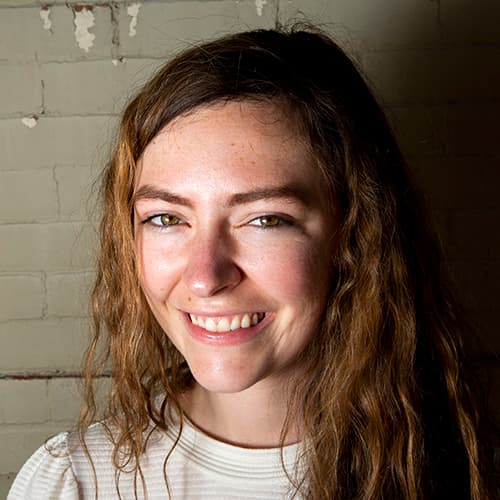On the corner of 35th and Walnut, in a warehouse arts space in the RiNo Art District, monuments to death hang on white walls: ghostly photographs of a woman in a veil, arrangements of preserved flowers and barbed weeds, and a grim reaper painted standing before a swirling vortex, his empty black eyes staring out at the viewer.
Bell Projects' latest exhibition, Memento Mori, is a communal reflection on mortality designed to help dispel fear of it. Rather than shying away from uncomfortable or taboo subjects, the exhibition confronts them. The pieces don't dwell in the fear of death, but instead suggest that it's a natural force, a universal one, and a reminder to make the most of the time we have on Earth. In a time where we are subsumed in the notion of our mortality, where for the last year during the pandemic we've been faced with the daily reminder that we will die, Memento Mori seeks to redirect our energy toward life.
The exhibit is based on the concept memento mori, Latin for "remember that you must die." While humans have been contemplating mortality for all of time, some scholars suggest that the idea of memento mori spiked in popularity during the Black Death, a plague that wreaked havoc over Europe and Africa, killing millions of people in just a couple of years. The concept was evident in artwork during the 14th century, in which motifs like skulls, hour glasses and flowers reflected the artists' awareness of life's impermanence.
The imagery that appears in this exhibition might, at first glance, seem dark. But each work plays with and challenges the notion of impermanence even as it accepts it. Preserved flowers will not wilt. A painter's consciousness can live forever as brushstrokes on a canvas. A moment in time will not end if it's captured in film.
Lindsey Bell, the exhibition's curator and the founder of Bell Projects, said that the subject of death today is a taboo one, something not everyone's prepared to engage with. The exhibition contextualizes death in hopes of making it easier to process. The phrase may seem morbid, but Bell said that the idea behind memento mori is that remembering we must die might help us remember to live, to hold onto life while we have it.
"It's this almost flipside to this, 'Remember you will die' -- this call to just embrace life and to live life fully," Bell said. "Tell people around you that you love them, and hold people close."
She said that the reminder of life's impermanence brought on by the pandemic has, for a lot of people, had that very effect. It's brought some families closer together and made people realize what mattered to them. She said considering death with that perspective can be freeing, rather than all-consuming.
"I think the pandemic, at least for me, has been kind of a pride check or a humbling experience," Bell said. "You kind of look around yourself and you realize all the great, amazing things that you have, and you don't take those for granted."
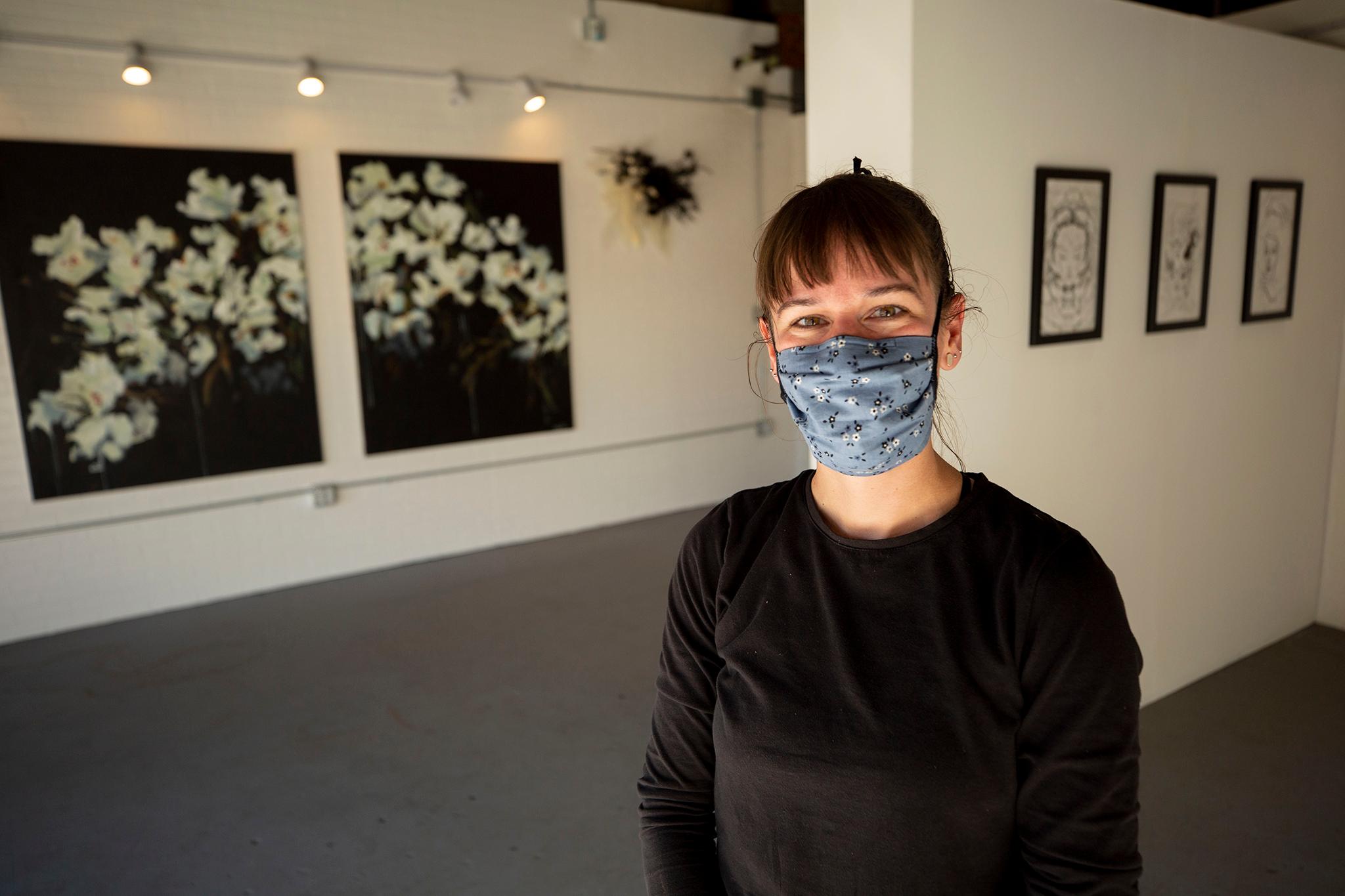
The show is a personal one for Bell.
"I've been kind of obsessed with this idea of mortality for probably my whole life," she said. Bell said she experienced the loss of a close family member at a young age. She remembers that back then, the people around her weren't comfortable talking about it, or simply couldn't express their grief in words.
"We're sort of taught to keep it inside and experience this thing alone," Bell said.
She said it can be healing to recognize that you're not alone in grief, that everyone experiences these feelings in so many different ways. Now, she's bringing together a collection of artists to share in a conversation about death and grief, and inviting Coloradans to join in.
Bell said that as the project has come together, she's been continually surprised at the beauty in the works. A motif that appears in several of the pieces is floral imagery.
"I think we always think of flowers being the symbol of life and vitality and abundance," Bell said. "But the way I'm looking at it now is that they have a lifecycle, too."
Flowers die and decay. But the flowers represented in the works have every semblance of life. They will not decay, but stay beautiful. Bell said art has the power to memorialize or preserve living things. Ashley Joon's paintings, for instance, preserve flora in acrylic paint. Her impressionistic flowers wilt and seem to bleed white against a dark backdrop.
"To paint something makes it sort of freeze in time," Bell said. "So it defies this impermanence."
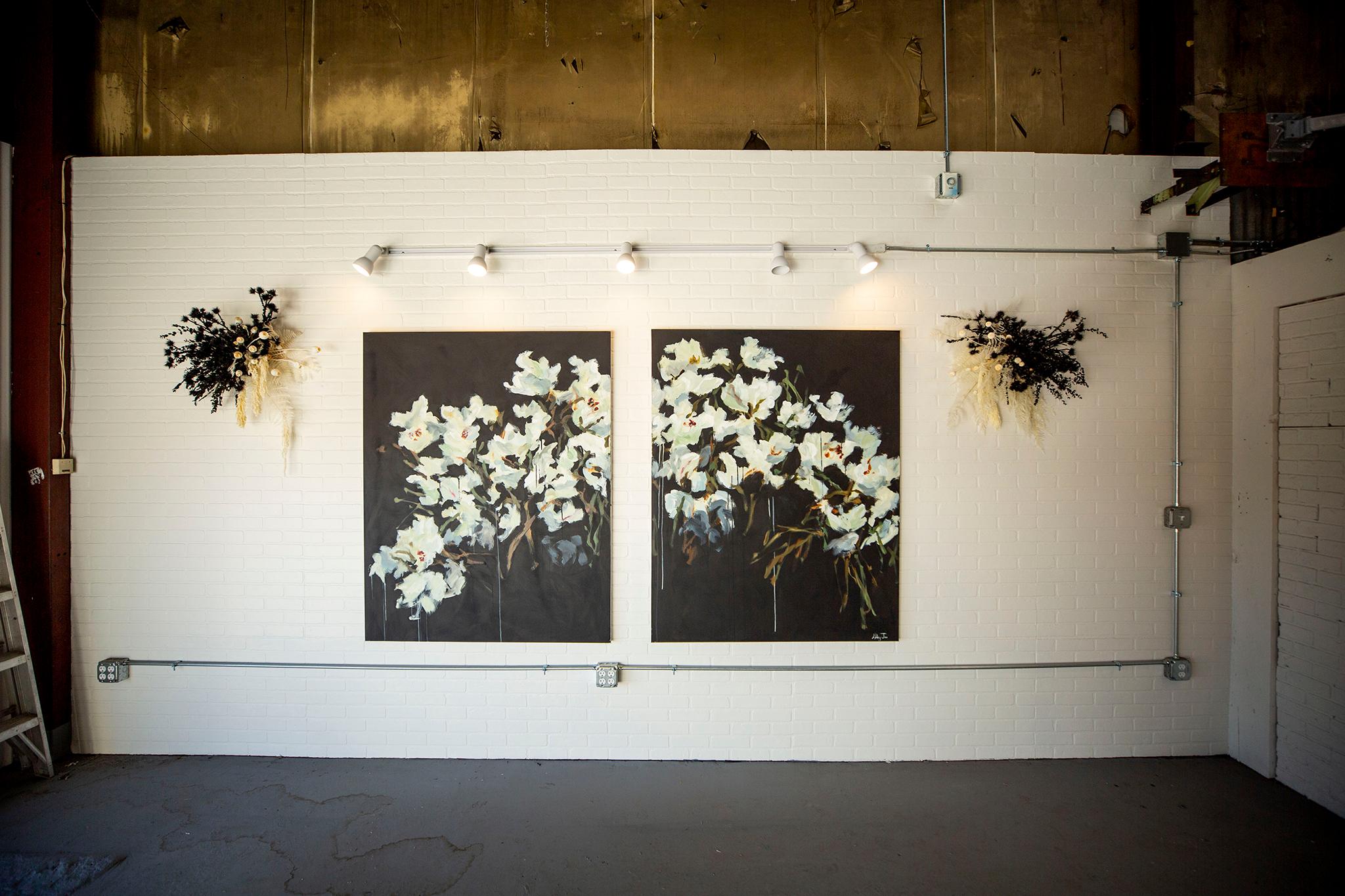
Jessica Sparzak is an artist and the owner of Pickletown Flower Company. In her floral displays, she works primarily with dried and preserved plants, presenting something that is inherently dead but which still retains the appearance of life.
Her work for the exhibition is a series of site-specific dried plant arrangements in soft neutral tones with hints of black. Some of the plants she bought, and some she foraged herself.
"I work a lot with weeds, and the type of weeds that I work with are extremely painful," she said.
Many have thorns and require great care to craft, including the barbed, thorny bull thistle used in her work for this exhibition. Usually, when she creates a bouquet, she removes the thorns. Not this time.

Sparzak started working with foraged plants during a difficult time in her life. She and her husband had just moved to Colorado from New York. At the time, she hated it here. She got pregnant, and after son was born, she suffered severe health problems, including sepsis and two pulmonary embolisms.
"I was literally dying in the hospital. And after his birth, I had about a three year recovery process because my body had just one problem after another," Sparzak said.
Her body was atrophied. She couldn't hold her son without assistance. Her mother moved in to help out, because she couldn't do anything for herself.
"And that was when I started working with tumbleweed," she said.
Sparzak said that during that time, she was staying with her in-laws. One day, her husband and father in law brought a giant, thorny tumbleweed home.
"I decided to take that piece of tumbleweed and sort of cut away at it," she said. "It looked like a big tangled mess, but I knew that there was actually a really beautiful shape in there."
As her son sat in his baby chair cooing, Sparzak hacked away at the tumbleweed, cutting it, at some points bleeding from the thorns. She said she cut it into that beautiful shape she'd envisioned, sewed it to a frame, hung it on the wall and sat back on the couch, staring at it.
"I remember looking at it and sort of sobbing my eyeballs out. It'd been through such a difficult time," she said. "And when I looked at that, I actually took a deep breath and I thought, Now I'm home. It's OK."
She'd made peace with that difficult period, with her new home. She said she now looks at that time in her life as a season of weeds: a painful time, one she couldn't control that kept coming, one that she didn't choose for herself but which was an invasive situation in her life.
"I had this epiphany, thinking how these weeds are invasive. No one wants them. But you know, what? It's what we do with them," she said. "They can actually be beautiful."
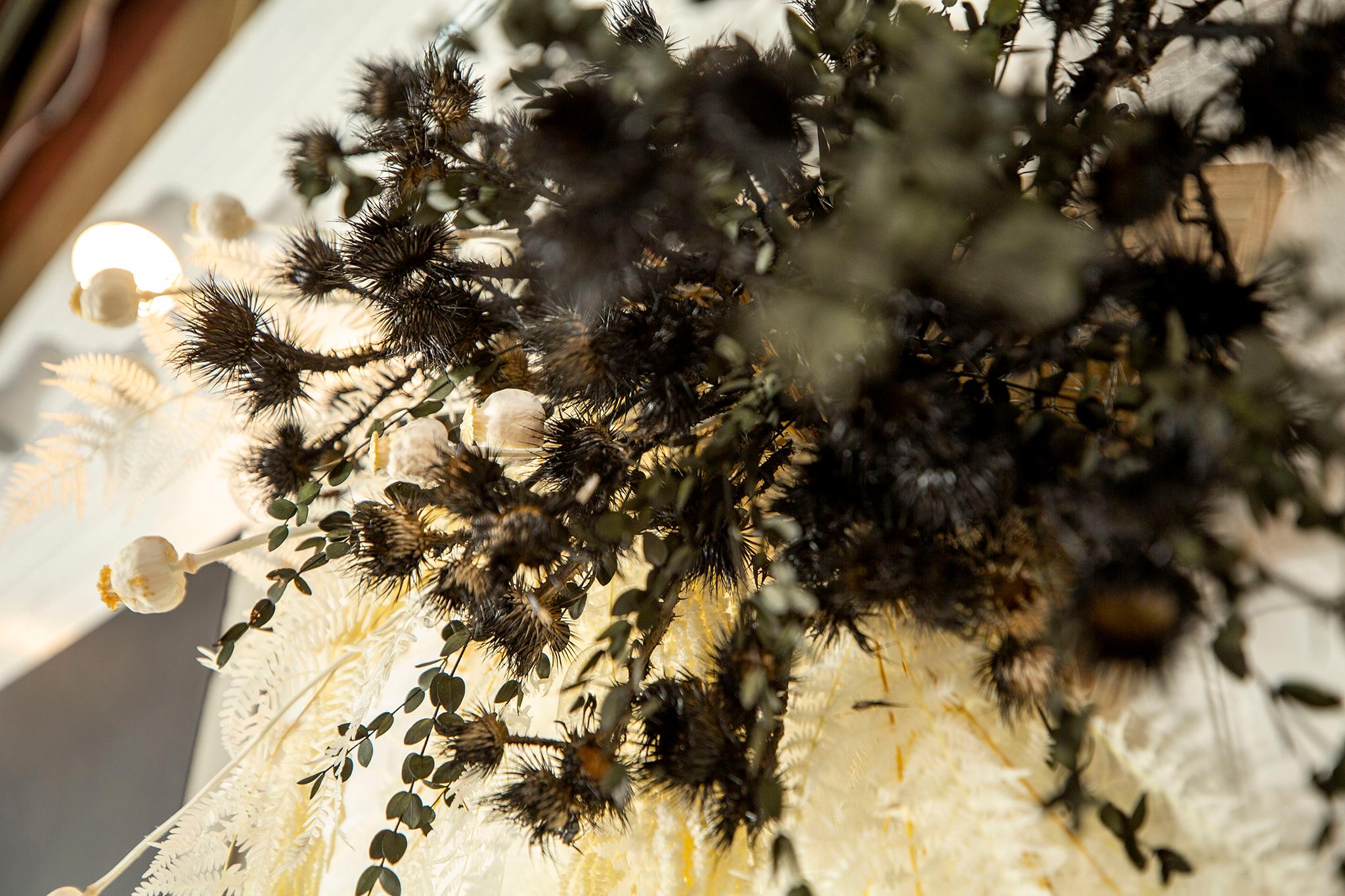
She said that in approaching the pieces for the Memento Mori exhibition, she contemplated her own experience with near death, wanting to infuse all of those memories and emotions into the work. Many of the plants and flowers she uses she has to order pre-preserved. Preservation is a delicate process, one that takes time to perfect. But weeds are much easier to preserve, she said. The sun does most of the work of drying and preserving them. Even after they're dead, they don't decay.
"What's funny is that weeds don't (die). Beautiful things do," Sparzak said. "The beautiful, delicate pedals, they decay. But those invasive weeds don't. And that's why I'm saying it's what we do with them."
The first artist Bell invited to join the project was Paul Wesley Langway III. She spoke to him last year, when art shows across Denver were being canceled and artists were losing motivation in isolation. Bell encouraged Langway to create work for the show, to express something that had been lost.
"We both found common ground in a lot of things," Langway said. "One of those things being art, and another one of those things being the -- unnatural, for I feel like most people -- but natural acceptance of our mortality."
He ended up creating a series of paintings whose central figure is death personified, a classic depiction of a grim reaper. While Bell encouraged him to create the rest of the works, he'd already begun work on one of them by the time she invited him to contribute to the exhibition. Death had already been on his mind.
He said he's struggled a lot -- and especially this last year during the pandemic -- with suicidal ideation.
"I was very depressed," he said. "And the idea of death was extremely appealing, for lack of a better way of saying that."
Art has always been an outlet for him: a release, a meditative thing, something that occupies his attention. He said his paintings reflect where he was mentally when he created them. He even references that mentality in the materials listed in the descriptions of his art. One painting, for example, was made using "wood, paint, crayons, pastels, and a life of pain." One incorporates "sorrow," another "curiosity."
Langway said that while he doesn't want to be in the headspace of looking forward to death, he thinks there's value in the remembrance of one's mortality. He said that if everyone stopped for a moment to think about how we're these tiny creatures floating around in space, and we're going to die, that people would change the way they treat others and the Earth.
"We would immediately look up and be like, why are we fighting these wars? Why are these people sleeping on the streets? Why are these children not eating food?" he said. "But we don't let ourselves do it."
He doesn't know if we ever will, but small reminders in books, music, and billboards and, yes, art shows, can get people a little closer to it.
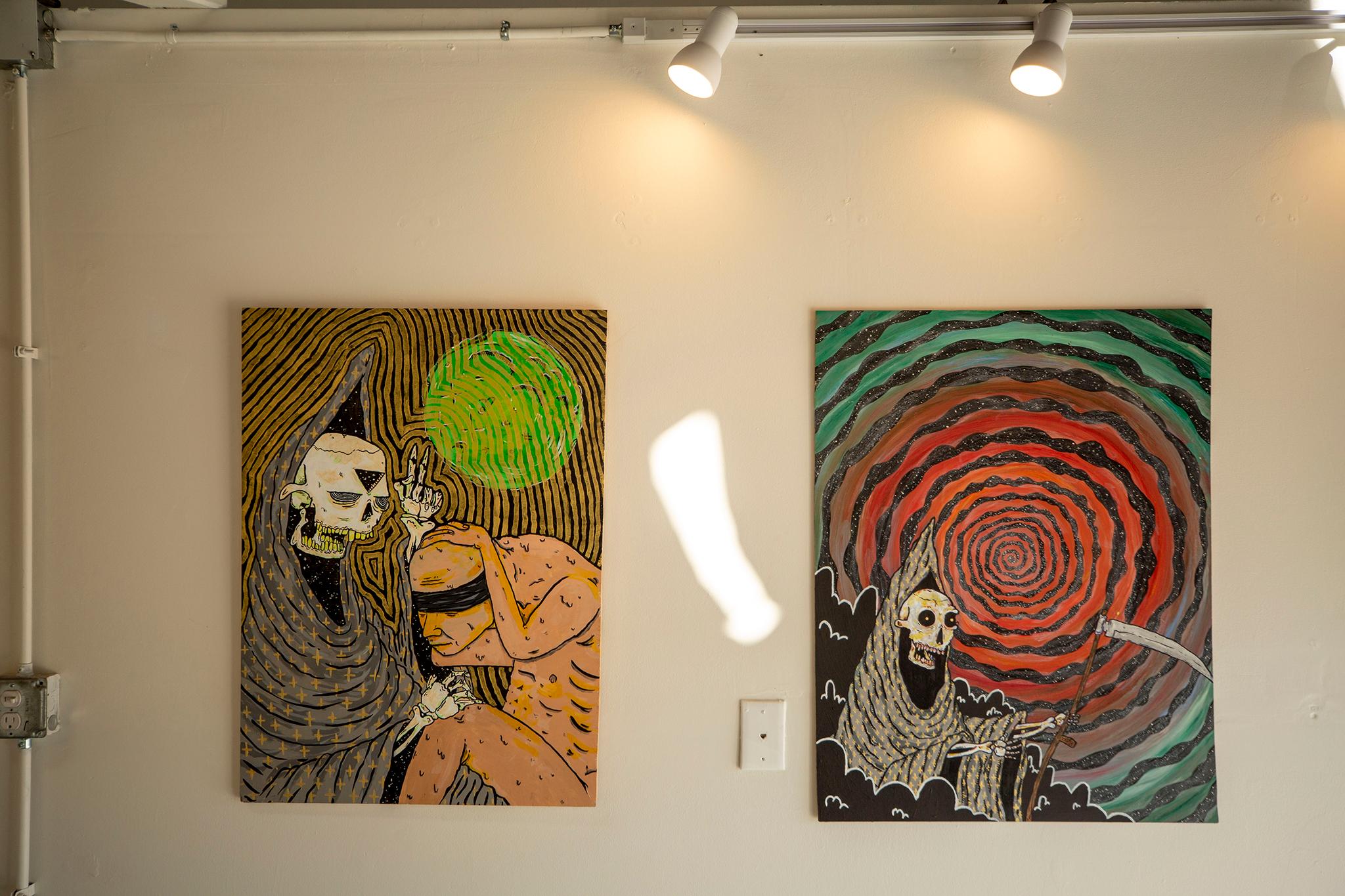
Bell said it was important to her to have a tattoo artist in the show to further the theme of permanence and impermanence.
That artist is Destiny Humrich, whose interest in questions of the permanent and impermanent go beyond tattoo art.
"I have so much respect for all stages of life. And afterwards," Humrich said.
She has a huge collection of animal bones: the skulls of a turtle, a bobcat, a mallard, some marmots. She's collected jaw bones she's found on hikes, some massive cow skulls she bought from a rancher in South Dakota, and even some human teeth, including her own baby teeth and wisdom teeth friends have given her after extractions.
"They are so beautiful to me," she said. "It's a different beauty that we have all the time within us, obviously that we only get to see after we're not here anymore."

While tattoos are often labelled "permanent," they last only as long as we do. Humrich said that "forever" as a concept is relative, and that a tattoo lasts for the duration of its wearer's personal "forever."
"It's still forever on the canvas that you put it on. But your canvas just so happens to be someone that will also pass away," she said. "That person will only know their whole lifeline, if that makes sense. So to them, it's still forever, just in the same way that drawing on a piece of paper is forever, because they'll take it with them. And they won't know anything beyond that."
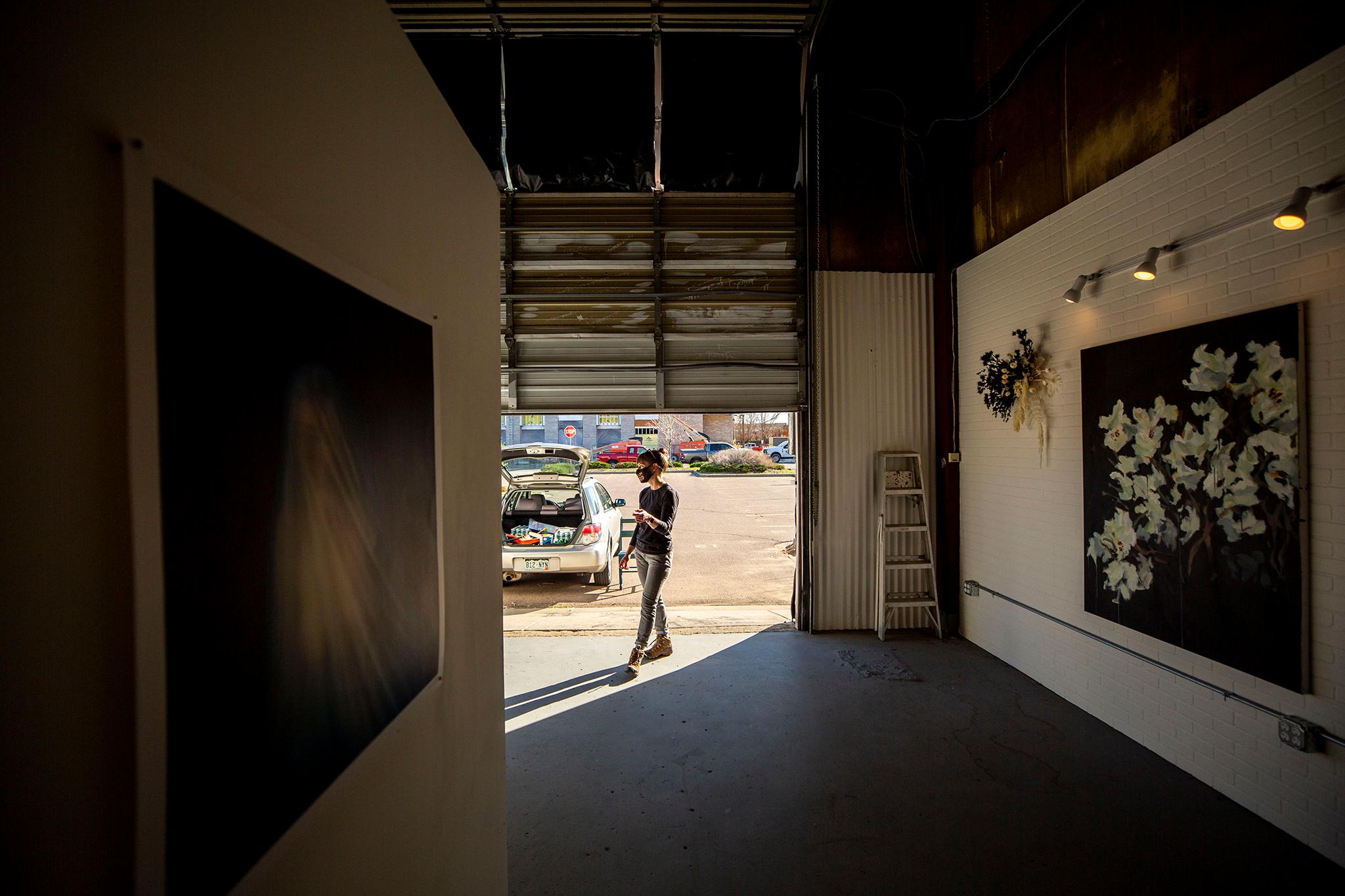
Photographer Michael Ash Smith says his work is unusually dark and moody for Denver. It was a natural fit for the exhibition.
"My work is basically a fascination with death and anxiety," he said.
The work that appears in Memento Mori is a black and white photo series based on one of Carl Jung's archetypes: the shadow. Jung's text, Smith said, deals with the dark spots of your mind. Smith wanted to do a series that would embody that, that would show what those spots look like, at least for him.
"We all have this inner dialogue that is back there in our mind that is always kind of thinking of, or worrying about something, or causing anxiety," Smith said.
He said some people pay more attention to it than others. For him, it doesn't so much lurk in a corner as it does dominate his thoughts.
"I've tried my best to kind of get what I had in my head out onto a photograph."
Starting in 2020, Smith worked with a subject to create 14 ghostly portraits, many of which incorporate a veil.
"I love the concept of a veil. A veil to me is this thin layer between the outside world and what I'm really thinking," Smith said. "And we're all thinking this kind of thing all the time, but no one says it. There's always this little veil over all these hidden things in our brains that we don't know about."
While the images are ghostly, Smith said they aren't explicitly about death, but rather anxiety: a delve into the dark areas of the mind. For a lot of people, and for Smith, that is death. He says he dreams about the afterlife or the moment of dying regularly. He said the dreams are never truly horrific. Instead, thinking over death makes him feel better about it. He turns it over in his head, processes it, breathes through it, tries to understand it. He said people think of anxiety as a bad thing, that there's an understandable instinct to bury it. But Smith believes there's a reason for his anxiety, as horrible as it can be. It helps him think things through, to cope and respond.
"I'm a researcher and an over-thinker, and I need to talk myself out of a lot of things, and talk myself into a lot of things," Smith said. "So for me, I feel better attacking it, rather than ignoring it."

Smith didn't tell anyone how much he thinks about death until maybe four or five years ago.
"I didn't want anybody to be like, what the f***? You're a whack job."
He started to express his anxiety visually through his photography.
"That's when I learned pretty quickly that other people have these same thoughts," Smith said.
Smith said he's heard from people as far as Russia who've told him what he's creating visually is exactly what's going on in their heads.
"I think all of us, as humans, crave connection," Smith said. "And when you're depressed and anxious, and in your own thing, and you're sitting in your room, and you don't leave the house for three months, it just kind of gets worse and worse and worse. And you still feel like you're completely alone, when in reality, you are nowhere near alone. There are lots of other people that are going through that. So for me, it's important that what I put out as a photograph that someone relates to."
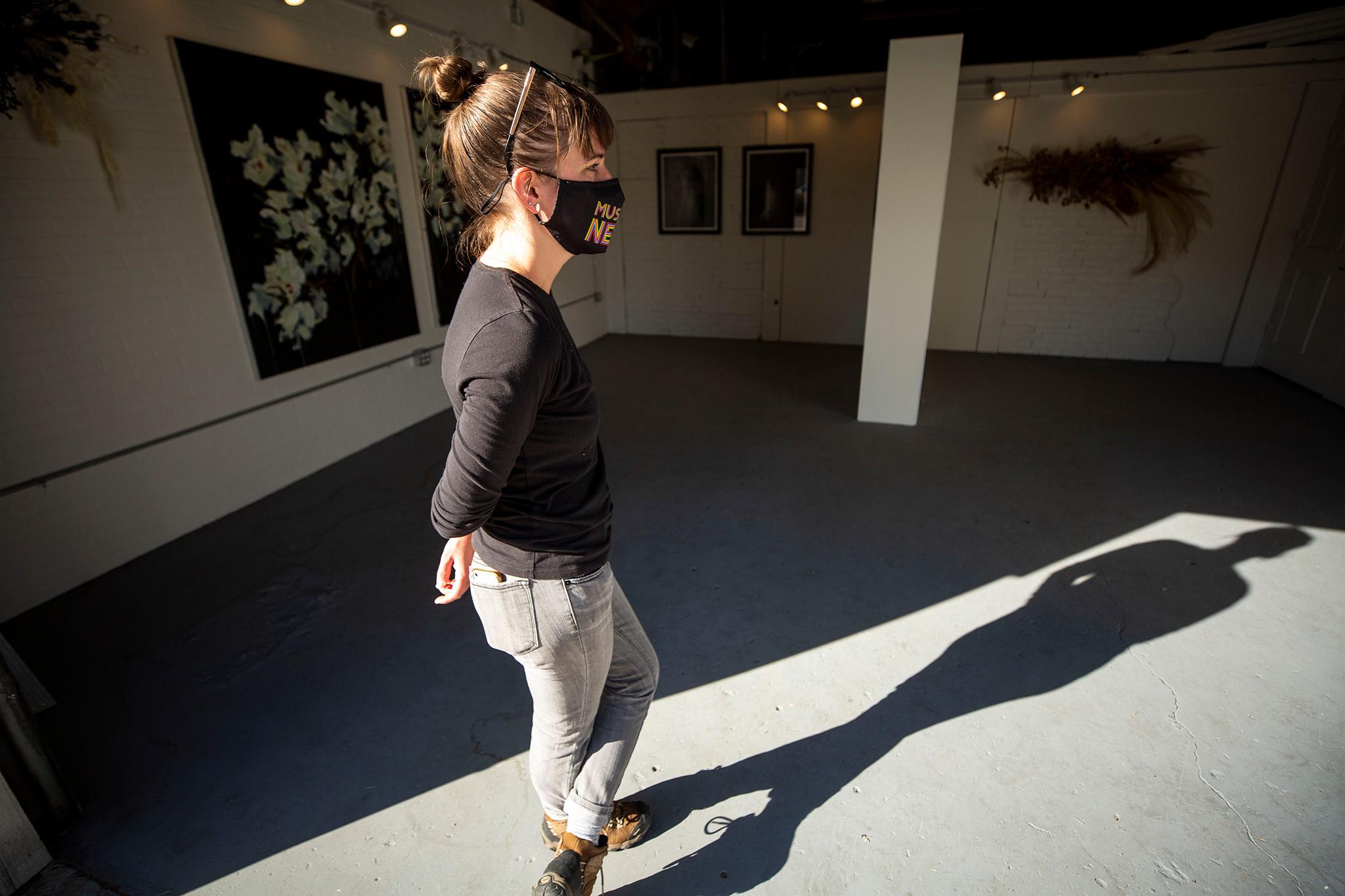
If death is a taboo subject, so are some of the other things explored in the exhibition. Depression, anxiety, tattoo art, grief, weeds, bones. Langway said that as with death, people are still hesitant to really engage in conversations about mental health.
"I think art is a really good beginning, but I don't think it's the end,'" he said. "I think we have a lot of work still ahead of us, as a society, to really, honestly make nothing taboo."
Memento Mori runs out of the Walnut Workshop at 3525 Walnut Street until May 16, 2021. You can book an appointment here.
